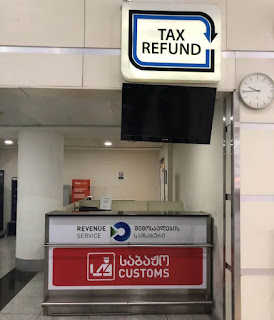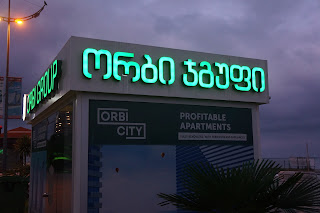Ever More Touristy Thailand
It's no news that Thailand is touristy. It has been that way for decades, but still the number of holiday-makers is disconcerting to us.
It's no news that Thailand is touristy. It has been that way for decades, but still the number of holiday-makers is disconcerting to us every time we travel through the country. This time was no different. Even in the small, quiet town of Prachuap Khiri Khan locals were almost outnumbered by tourists.
From Bangkok to Malaysia
The main reason why we nowadays travel to Thailand is that it is sometimes cheaper to fly to Bangkok than to Kuala Lumpur, and then continue by train to Malaysia, which is almost costless if you choose a third class seat. This time, however, we also took a quick side step to Pattaya to witness how the Russians and the Chinese are taking over the city from the Scandinavians, who used to be the major expat and tourist group around. Russian language is now spoken everywhere, and many of the restaurants, hotels and shops cater specifically to the Russian population. Even our flight from Dubai to Bangkok was mostly occupied by Russians. This is perhaps no wonder as Russians' destination choices have been rather drastically limited now that the old favourites, Egypt and Turkey, are banned.
Prachuap Khiri Khan, on the other hand, draws European pensioners, particularly old French hippies who do not enjoy more touristy parts of Thailand like Hua Hin or Phuket. They like to stay in guesthouses built in traditional wooden houses, cook by themselves, and rent a bicycle for little tours around the area, for which this little town with a beautiful beach boulevard is great for.
When continuing deeper into the south, the number of tourists drops dramatically. The south has never been popular among tourists and probably won't be in the future either as Islam is not compatible with the main items sold in Thailand: the beaches and the girls. Besides, the south has an unsafe reputation. Armed soldiers hop into the train as muslim regions approach to guard passengers. This seems a little exaggerated but this is how it has been for years. Thailand could easily get rid of the problem if they let the Muslim south join Malaysia.
Pros and cons
There are some inarguable upsides in increasing tourism, particularly higher investments in travelling infrastructure. Travelling around in Thailand is very easy as long as you follow the touristic track. There are VIP buses shuttling between the most popular destinations that run frequently and are inexpensive. For example, the bus from Suvarnabhumi airport to Pattaya costs only 120 baht (3,20€) Although there is inflation, hotel prices are still affordable, especially if you stay longer. In Pattaya, you can get an aircon room with a fridge, WiFi, and a flat-screen TV for 9000 baht (240 euro) per month, and if you go further away from popular places, prices are even lower. Life is also made easy by the fact that in tourist destinations, Thais, or free men as they call themselves (Thai), nowadays speak passable English.
The downside of mass tourism include crowded destinations, increasing pollution, westernisation of local cultures, (sometimes) higher prices, and bad customer service. It is now rare to see a genuine smile on Thais' lips. They are tired of tourists and only smile to customers who pay well, and once customers turn their back, the smile fades. Thailand is not an exception in this respect. Customer service tends to be bad in all popular tourist destinations including the Canary Islands in Europe. And the visa procedure in Thailand is as bad as ever for long-stay foreigners.
Numbers
In 2016, the Thai military dictatorship received a record of 32.59 million foreign visitors. According to the Tourism Authority of Thailand, the tourism industry earned 2.52 trillion baht ($71.4 billion) last year, up 11 percent from 2015. With these figures, Thailand is the eleventh most-visited country in the world.









Comments